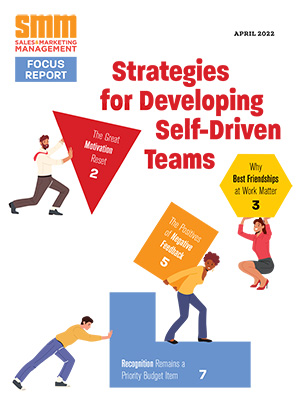“Know your customers” is the mantra for building business relationships that last. One way to understand them better is to ask questions. Customer surveys have become all the rage, in part due to simple technology like Survey Monkey or Survey Gizmo. Surveys are a great way to learn more about customers and prospects, but we are nearing a tipping point for online surveys, says Howard Sewell, president of Spear Marketing Group, a full-service B2B marketing agency.
In a recent blog post on CustomerThink.com, Sewell states that surveys continue to be an excellent way to spot market trends and identify qualified leads. Results can be repackaged and used for content marketing, which helps your company boost its thought leader status. But your clients are as busy as you are, and like you, they probably receive a half-dozen or more survey requests each week.
It’s more challenging than ever to convince your target audience to complete a survey. Sewell offers these five tips for generating interest and completing a successful survey:
Choose a topic that interests your audience.
Many survey topics are selected because they relate best to the marketer’s solution or category. But choosing a topic simply because it aligns with your interest in creating content on that same subject can be misguided. Prospects respond best to surveys on topics for which they have an immediate interest. In particular, the most successful surveys are often those focused on topics for which prospects are motivated to benchmark themselves against their peers.
Sell the value of taking the survey.
Simply saying, “We need your opinion” isn’t going to compel a busy executive to sacrifice even five minutes of his or her time. Prospects take surveys for lots of reasons, some of them business-related (“I’m curious how my peers are tackling these same issues”); others more personal (“I can use this data to show my boss how our department is outpacing other companies”). Successful surveys appeal to both business and personal motivators, and the campaigns highlight that value.
Create a seamless user experience.
Surveys are by definition longer than your typical B2B registration form, so it’s critical to present a user experience that is seamless and intuitive, and minimizes abandonment rates. Presenting a cohesive, professional design helps. In addition, by selecting best-of-breed technologies (marketing automation, survey tools), you’ll not only create an optimal user experience and maximize conversions, but also facilitate data collection, campaign tracking and attribution, and automated follow-up.
Leverage your investment by repurposing content.
Just as more people typically end up watching recorded webinars than attended the live event, so too the value of a survey campaign is largely dependent on how you market, merchandize and repurpose survey data. In all likelihood, many more people will download a survey report than will actually complete the survey in the first place. The best way to leverage your survey investment, and to extend the life of your campaign, therefore, is by creating multiple assets based on that survey data. For example:
• A downloadable report summarizing the data collected along with expert analysis
• A webinar or podcast in which the results are presented along with the same analysis
• An infographic highlighting key findings (with a call to action to download the report)
• A blog post summarizing the findings (with the same call to action)
Be controversial.
When you publish the results of your survey, it’s easy to fall into the trap of then marketing those results in dry, academic language. But those aren’t the kind of headlines that generate press, social shares, downloads and leads. When our agency conducted a survey last year on the degree to which B2B marketers were fully utilizing marketing automation, we published a report titled “The State of Marketing Automation Maturity.” However, when we promoted that report, we did so with the headline: “Marketing Automation Users Score a C in Maturity.” The result was hundreds of downloads, more than a thousand social shares and articles in more than a dozen online publications.



